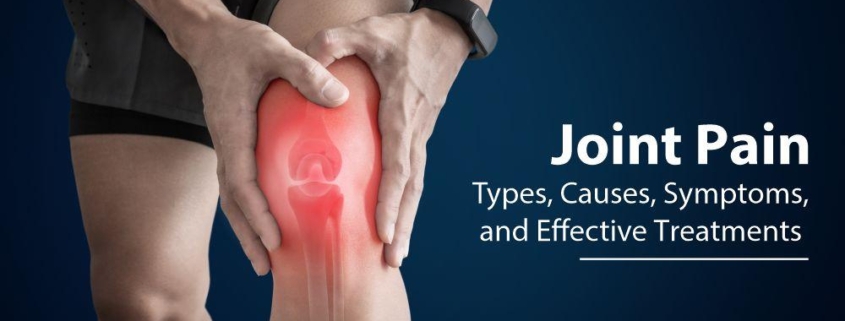5 Warning Signs Your Joint Pain Requires Medical Attention
Joint pain can be a common nuisance, affecting millions of people across the globe. While occasional discomfort may be a normal part of life, there are times when the signals from your body indicate something more serious. In this listicle, we will explore 5 warning signs that your joint pain requires medical attention. By understanding these key indicators, you can empower yourself to take proactive steps toward your health. Whether you’re dealing with mild stiffness or more severe symptoms, recognizing these signs can help you determine when it’s time to consult a healthcare professional. Join us as we delve into the critical clues that could lead to a more effective treatment and a better quality of life.
1) Persistent Pain: If your joint pain lingers for more than a few days without improvement, it may be time to consult a healthcare professional. Persistent pain can indicate an underlying issue that requires attention, rather than just a simple strain or overuse
Joint pain that refuses to fade can be more than just a minor inconvenience; it may signal a deeper issue that warrants professional evaluation. If your discomfort persists for more than a few days, it’s crucial to take note of accompanying symptoms that could provide insight into the severity of your condition. Consider the following factors that might accompany your persistent pain:
- Swelling or Inflammation: If your joints appear swollen or feel warm to the touch, this could indicate an inflammatory response.
- Limited Mobility: Struggling to perform daily activities due to stiffness or pain can be a sign that your joints need medical attention.
- Fever or Chills: The presence of systemic symptoms like fever may suggest an infection or autoimmune condition.
Ignoring persistent pain can lead to worsening conditions that could have been treated more effectively if addressed sooner. A healthcare professional can conduct a thorough examination and may recommend diagnostic tests to identify the underlying cause of your discomfort. Here’s a simple breakdown of potential diagnostic approaches:
| Diagnostic Method | Description |
|---|---|
| Physical Examination | A doctor will assess joint function and look for signs of inflammation. |
| X-rays | Imaging can reveal joint damage or arthritis. |
| Blood Tests | Can help identify markers of inflammation or autoimmune disorders. |
2) Swelling and Inflammation: Noticeable swelling or inflammation around a joint can be a red flag. If your joints appear puffy, warm, or tender to the touch, it could signify an inflammatory condition, such as arthritis, that needs to be evaluated by a doctor
When you notice noticeable swelling or inflammation around a joint, it’s essential to take it seriously. This puffiness can be more than just a minor inconvenience; it may indicate an underlying inflammatory condition. Pay attention to how the affected area feels—if it is warm or tender to the touch, these are clear signals that something is amiss. Conditions like arthritis, bursitis, or even infections can lead to such symptoms, making it crucial to seek medical evaluation. Ignoring these signs can result in further complications or chronic issues.
To better understand the potential causes of joint swelling, consider the following factors that may contribute to inflammation:
- Injury: Trauma to the joint can lead to fluid accumulation.
- Autoimmune Disorders: Conditions like rheumatoid arthritis can cause the immune system to attack joint tissues.
- Infections: Bacterial or viral infections may result in joint swelling.
- Gout: This form of arthritis is caused by uric acid crystals forming in the joint.
| Condition | Symptoms |
|---|---|
| Arthritis | Swelling, pain, stiffness |
| Bursitis | Localized swelling, tenderness |
| Infection | Fever, redness, swelling |
| Gout | Severe pain, redness, swelling |
3) Limited Range of Motion: Experiencing difficulty in moving a joint or a decreased range of motion can be concerning. If you find it hard to bend, straighten, or rotate a joint as you usually would, seeking medical advice can help identify potential causes and prevent further complications
When you notice a decreased range of motion in your joints, it can be more than just a minor inconvenience; it may signal an underlying issue that requires attention. Whether it’s difficulty bending your knee, straightening your elbow, or rotating your shoulder, these limitations can hinder daily activities and impact your quality of life. Ignoring these symptoms can lead to further complications, including muscle atrophy and joint stiffness. It’s essential to pay attention to how your body feels and respond accordingly.
Several factors can contribute to a limited range of motion, including:
- Injury: Past injuries may leave lasting effects on joint flexibility.
- Arthritis: Conditions like osteoarthritis or rheumatoid arthritis can cause inflammation and pain, restricting movement.
- Tendonitis: Inflammation of tendons can lead to discomfort and limited mobility.
- Scar Tissue: Previous surgeries or injuries may create scar tissue that impedes movement.
Recognizing these signs early and consulting with a healthcare provider can help you understand the cause and explore treatment options. A thorough examination may include physical assessments and imaging tests, enabling a tailored approach to restore your joint function.
4) Fever or Other Systemic Symptoms: Joint pain accompanied by fever, fatigue, or unexplained weight loss can signal a more serious condition, such as an infection or autoimmune disorder. These systemic symptoms warrant immediate medical attention to address the root cause effectively
When joint pain is accompanied by fever, fatigue, or unexplained weight loss, it can be a red flag indicating a more serious underlying issue. These systemic symptoms often suggest that your body is fighting an infection or battling an autoimmune disorder. In such cases, the pain may not merely be a localized issue but rather a manifestation of a systemic problem that requires immediate medical evaluation. It’s crucial to pay attention to these signs, as they can help healthcare professionals pinpoint the root cause more effectively.
Consider the following potential conditions that could present with joint pain and systemic symptoms:
| Condition | Common Symptoms |
|---|---|
| Rheumatoid Arthritis | Joint swelling, morning stiffness, fatigue |
| Infectious Arthritis | Fever, chills, redness around joints |
| Lupus | Fatigue, skin rashes, joint pain |
| Lyme Disease | Fever, fatigue, bull’s-eye rash |
Each of these conditions requires prompt diagnosis and treatment to prevent further complications. If you experience joint pain alongside these systemic symptoms, do not hesitate to seek medical attention. Early intervention can significantly improve outcomes and help manage any underlying health issues effectively.
5) Joint Instability: If your joint feels unstable or gives way during normal activities, it could indicate a ligament injury or other structural issues. This sensation of instability should not be ignored, as it may lead to further damage or complications if left untreated
Experiencing a sensation of instability in your joint can be alarming and is often a sign that something is amiss. This feeling may present itself during daily activities such as walking, climbing stairs, or even standing still. When your joint feels like it might give way, it could indicate a ligament injury, cartilage damage, or other structural issues. Ignoring this symptom can lead to further complications, as the body may compensate for the instability, resulting in additional strain on surrounding muscles and ligaments.
It’s essential to pay attention to the specific characteristics of the instability you’re experiencing. Consider the following factors:
- Frequency: How often does the instability occur?
- Severity: Does the feeling of giving way lead to falls or significant discomfort?
- Location: Which joint is affected? Is it a recurring issue in the same area?
- Associated Symptoms: Are there any other symptoms present, such as swelling or pain?
Documenting these details can be invaluable when discussing your symptoms with a healthcare professional. Early intervention can help prevent further damage and restore stability to your joint, allowing you to return to your regular activities without fear of injury.
Final Thoughts
As we wrap up our exploration of the five warning signs that indicate your joint pain may require medical attention, it’s essential to remember that your body often knows best. Listening to its signals can be the key to maintaining your mobility and overall well-being. If you’ve recognized any of these signs in your own experience, don’t hesitate to seek professional advice. Early intervention can make a significant difference in managing pain and preventing further complications. Remember, prioritizing your health is not just a choice; it’s a commitment to living your life to the fullest. Stay informed, stay proactive, and take care of those joints!









Leave a Reply
Want to join the discussion?Feel free to contribute!